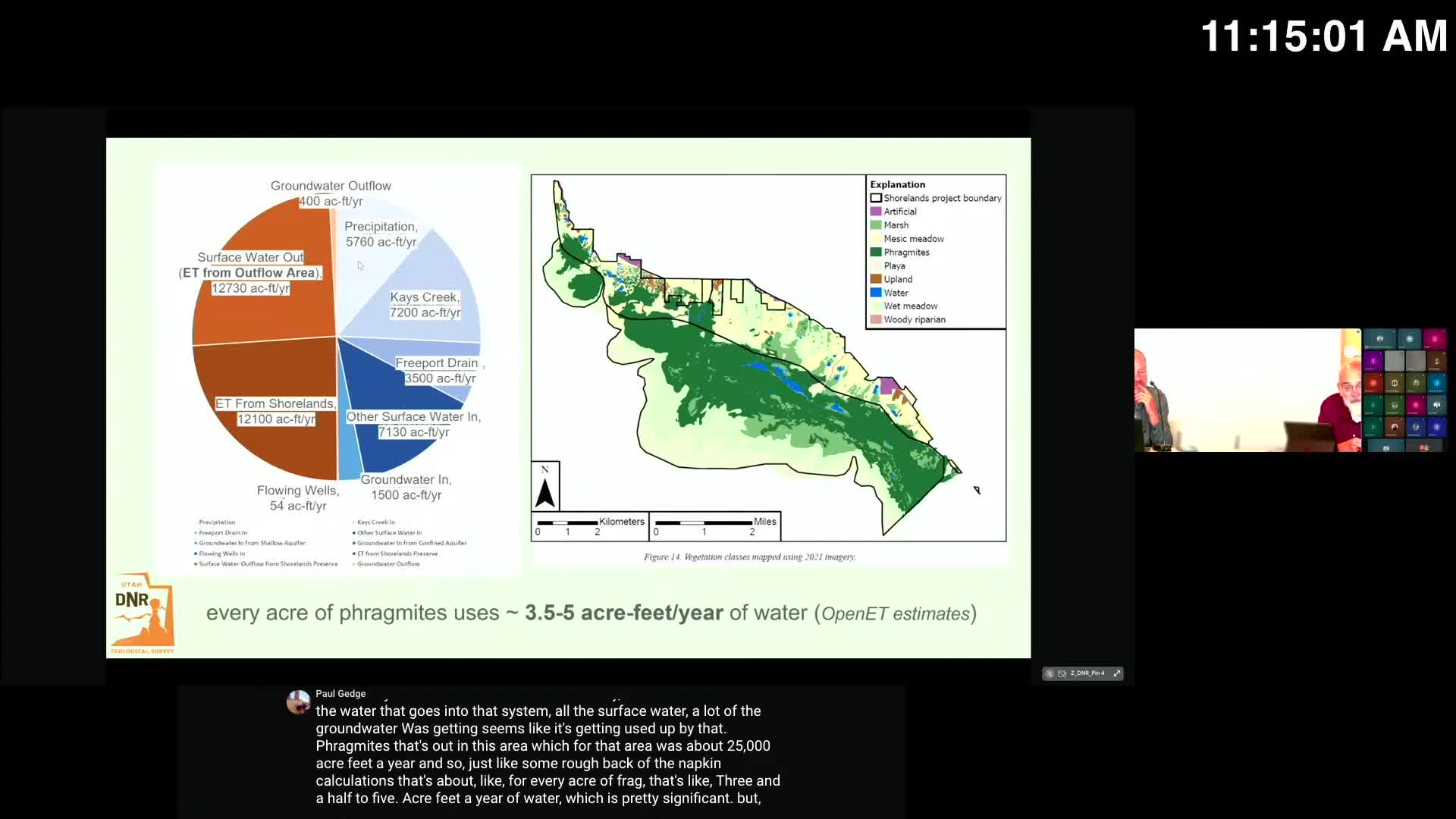Researchers Evaluate Evapotranspiration and Microbial Communities at Farmington Bay Wetlands
September 12, 2025 | Great Salt Lake Advisory Council, Utah Division of Environmental Quality, Utah Government Divisions, Utah Legislative Branch, Utah
This article was created by AI summarizing key points discussed. AI makes mistakes, so for full details and context, please refer to the video of the full meeting. Please report any errors so we can fix them. Report an error »

The Great Salt Lake Advisory Council convened on September 10, 2025, to discuss significant environmental monitoring efforts aimed at understanding the hydrology of the Great Salt Lake and its surrounding areas. A key focus of the meeting was the introduction of an eddy covariance station in Farmington Bay, which will provide direct measurements of evapotranspiration (ET) from Phragmites, a type of wetland plant.
The station, supported by grants from the Utah Division of Water Resources and other agencies, is part of a broader initiative to gather data on water usage in the region. The data collected will help assess the impact of recent treatments on plant health and water consumption. Preliminary findings indicate that the site is experiencing high levels of evapotranspiration, estimated at 33 to 35 inches per year, which aligns closely with satellite-based estimates from Open ET.
Despite the promising setup, researchers noted that there has not yet been a visible response in plant greenness or significant changes in ET following recent treatments. The team, which includes collaboration with the Nature Conservancy and Brigham Young University, remains hopeful that ongoing monitoring will reveal changes as the treatments take effect.
In addition to the eddy covariance station, the council discussed the use of advanced technologies such as lidar and multispectral drone imagery to gain a comprehensive understanding of the area's hydrology and microbiology. These efforts are crucial for developing effective management strategies for the Great Salt Lake and its watershed.
The meeting underscored the importance of continued research and collaboration among various stakeholders to address the environmental challenges facing the Great Salt Lake. As the council moves forward, the data collected will play a vital role in informing future conservation efforts and ensuring the health of this critical ecosystem.
The station, supported by grants from the Utah Division of Water Resources and other agencies, is part of a broader initiative to gather data on water usage in the region. The data collected will help assess the impact of recent treatments on plant health and water consumption. Preliminary findings indicate that the site is experiencing high levels of evapotranspiration, estimated at 33 to 35 inches per year, which aligns closely with satellite-based estimates from Open ET.
Despite the promising setup, researchers noted that there has not yet been a visible response in plant greenness or significant changes in ET following recent treatments. The team, which includes collaboration with the Nature Conservancy and Brigham Young University, remains hopeful that ongoing monitoring will reveal changes as the treatments take effect.
In addition to the eddy covariance station, the council discussed the use of advanced technologies such as lidar and multispectral drone imagery to gain a comprehensive understanding of the area's hydrology and microbiology. These efforts are crucial for developing effective management strategies for the Great Salt Lake and its watershed.
The meeting underscored the importance of continued research and collaboration among various stakeholders to address the environmental challenges facing the Great Salt Lake. As the council moves forward, the data collected will play a vital role in informing future conservation efforts and ensuring the health of this critical ecosystem.
View full meeting
This article is based on a recent meeting—watch the full video and explore the complete transcript for deeper insights into the discussion.
View full meeting

